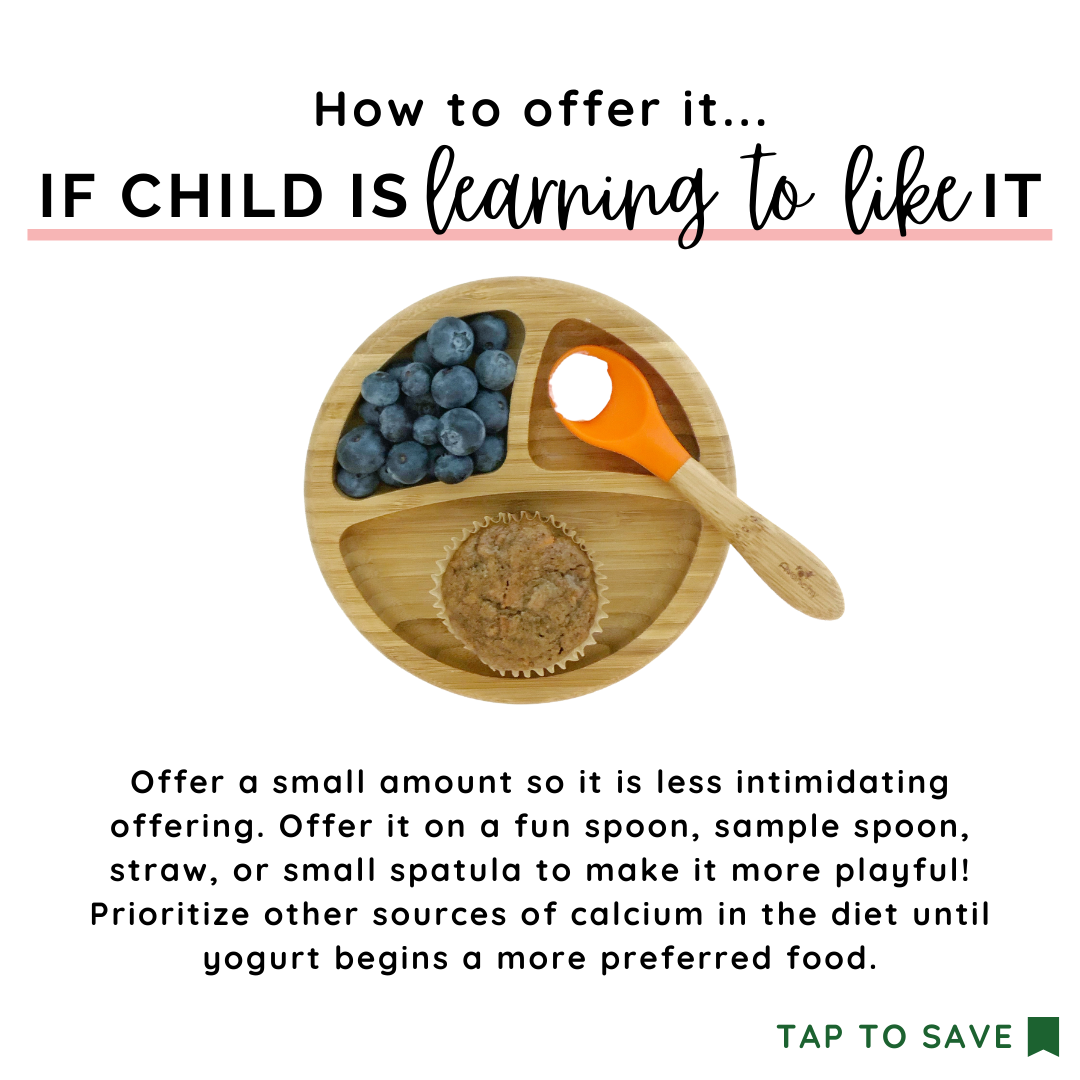Learning to Like: Yogurt
In this blog post, we will review some of the basics about exposing your child to yogurt, why it is important for helping them meet their growth and development needs, and what are some of the best ways to both help your child learn to like yogurt and add variety in the diet with yogurt.
You can jump to any of these sections using the outline below.
Learning to Like: Yogurt
The Nutritional Benefits of Yogurt for Kids
Yogurt, most commonly made from cow’s milk, provides many nutrients in the diet. This is particularly beneficial with kids who have high nutritional needs but are often still learning to like nutrient-dense foods. Yogurt offers an option usually well-received by children with many nutrients like calcium, phosphorus, vitamin A, vitamin D (in products fortified with vitamin D), riboflavin, vitamin B12, protein, potassium, zinc, choline, magnesium, and selenium. We will highlight five nutrients to consider here.
Calcium
Children have increasing calcium needs throughout childhood. Although there are many ways for families to meet their calcium needs, dairy tends to be the main source of calcium in Americans’ diets. For this reason, helping our children learn to like calcium-rich foods (like yogurt) early on helps promote the likelihood that they can continue to meet their needs through food. The Dietary Guidelines for Americans recommends kids eat on average two cups of dairy daily. While this might include other options like milk and/or cheese as well, yogurt offers one way for children to meet their calcium requirements.
Vitamin D
Vitamin D is both a nutrient and a hormone that helps with the absorption of calcium and contributes to bone health, among many other functions in the body. However, with infants under six months being advised to stay out of the sun and later sunscreen use in kids (blocking out vitamin D from the sun), the American Academy of Pediatrics recommends infants be started on vitamin D early on. As children continue to grow, complementary foods are introduced, and their vitamin D needs increase, it can be difficult for children to meet their needs without supplementation since there are not many rich sources of vitamin D in the diet. Fortified foods, like yogurt, are helpful for helping kids meet their needs with food. To know if the yogurt you buy contains vitamin D, simply look at the nutrition facts label at the bottom where micronutrients are shown. This is where you will see the amounts for both calcium and vitamin D listed.
Protein
Many parents are concerned about their children’s protein intake. Since many kids may be learning to like meats, seafood, beans, tofu, and nuts (to name a few), yogurt can be a good way for kids to get protein in at meals or snacks. If trying to boost protein intake, families may want to try Greek yogurt or skyr, which tend to have more protein than regular yogurt.
Fat
While there is conflicting data about whether children over the age of two should transition to low-fat or fat-free dairy in their diet, families can consider offering higher fat yogurt varieties or including added fat sources like ground nuts, seeds, or drizzled nut butter on top of yogurt. A family’s target for fat intake is 30-40% of total calories for children ages 1-3, 25-35% of total calorie intake for children ages 4-18, and 20-35% of total calorie intake for adults. If a child needs help meeting these fat needs or prefers the taste, whole fat or a reduced fat yogurt is a fine choice over the lower fat varieties.
Probiotics
Many parents are concerned about their children’s gut health and whether or not their child needs a probiotic. While probiotics can help some children with certain health conditions, it is usually recommended that families use a foods-first approach (before adding in additional supplementation). Yogurt is a kid-friendly way to include more probiotics into the diet using food.
Serving Sizes of Yogurt for Kids
Despite some of the many nutritional benefits listed above, we do not want to use any of these as reasons to pressure, force, or coerce our kids to eat it. Research shows that feeding behaviors like pressuring or bribing can deter kids from intuitively wanting to eat nutrient-dense options like yogurt, where tactics like routine, modeling, and giving choices can help.
Instead, including it as part of your family’s overall diet will help show your child how it fits as one of many satisfying options. You can adjust the amount offered to help with this. Additionally, be sure to keep the language neutral around yogurt rather than ranting about the benefits.
If your child loves yogurt
Expect they may eat a larger than “normal” portion. This is okay. Allow them seconds or thirds, as available. Then, as the parent, adjust their meals and snacks accordingly that day or week. As mentioned above, most kids need around two cups of dairy per day. So if your child loves yogurt and eats cheese, milk, or other sources of dairy daily, consider how you offer it so that they eat the recommended amount without eating so much of it that the dairy displaces other nutrient-rich foods in the diet, like iron.
If your child likes yogurt
Offer a small portion with other preferred and non-preferred foods. They can ask for seconds, but offering less up front can help minimize food waste.
If your child is learning to like yogurt
Offer a small bite so it is less intimidating to sample. Offer it on a fun spoon, sample spoon, straw, or small spatula to make it more playful!
Related: Want to help build your child’s list of preferred foods? Use my free Love it, Like it, Learning it list ® worksheet for a simple yet effective starting place.
How to Shop for Kids’ Yogurt
Yogurt for Babies
Babies should not have fluid cow’s milk before one year of age, but yogurt can be a great way of exposing them to dairy early on. When shopping for a yogurt to offer your infant, opt for one that is high in fat such as a whole milk yogurt. Although infants don’t necessarily need the added protein of a skyr or Greek-style yogurt, some families prefer offering thicker options like these for self-feeding so they don’t slip as easily off of a spoon or goo-tensil (or their hands if digging straight in!). Lastly, babies should be offered a yogurt with no added sugar. Since added sugar is not recommended under age two, you want to look for an option that is plain flavored and lists “0g added sugars” on the nutrition facts label. This will help rule out the potential of any honey being added (honey should be avoided in children under one year old), and it will help to shape your child’s taste preferences for less-sweet options from an early age.
Yogurt Options for Babies: a whole, plain milk yogurt (often labeled 4%) or no-sugar-added yogurt smoothie melts like these from Amara Organic Foods. You can also make your own yogurt melts, if preferred.
Yogurt for Toddlers/Kids (2+ years old)
Ideally, in the formative years of children’s eating habits, we want to get them accustomed to the tart taste and creamy texture of yogurt. However, if some sweetness is preferred, you may either buy plain yogurt and add fruit with a little honey (after age one) or maple syrup, buy flavored yogurt or kefir to mix half and half, or shop for yogurts that are lower in added sugar. If the texture of one yogurt is something your child is still learning to like, you may consider trying other brands or varieties as the taste and texture can vary widely between regular and Greek yogurts, as well as options like kefir.
Yogurt Options for Toddlers (2 years and older): Check out this criteria for yogurt drinks, yogurt pouches, yogurt tubes, and yogurt cups for kids to limit the added sugar and maximize other nutrients.
Yogurt for Dairy-Free Kids
If your child is allergic or intolerant to dairy, there are increasingly more non-dairy yogurt options available. These use milk alternatives like almond, cashew, coconut, or oat milk as the base. As stated above, you want to be aware of any added sugar, which many dairy-free yogurts have. Additionally, compare the fat, protein, calcium, and vitamin D content of these options to help you decide which ones to try first. Since the nutritional profiles and tastes of these can vary widely, you may need to try a few options from what your local store has available to find one that meets your child’s needs and taste preferences.
Related: Check out this helpful dietitian mom’s review on dairy-free yogurts.
Yogurt Packaging:
There are a lot of options for buying yogurt in bulk and putting it into a bowl or squeeze pouch of your own, or you can even make your own homemade yogurt in appliances like an Instant Pot. Depending on your need for convenience and/or a cost-effective option, you might consider this range of options for yogurt.
How to Offer Yogurt to Kids
Yogurt can be a versatile food for children to enjoy. However, kids often get hooked on a specific brand, type, or flavor of yogurt that may be high in added sugar or lack fat and protein. Instead, let your child experiment with other foods to help add flavor and fun to plain, whole milk yogurt. Changing up the way yogurt is offered helps lessen picky eating tendencies and add variety to a child’s diet through the yogurt itself and other foods it opens the door to!
Kid-friendly ways to offer yogurt and prevent picky eating
If your child is hooked on yogurt and seems to protest other brands, flavors, or varieties, try to make small changes to help them gradually accept more variety in the yogurts they enjoy.
Consider ideas like these:
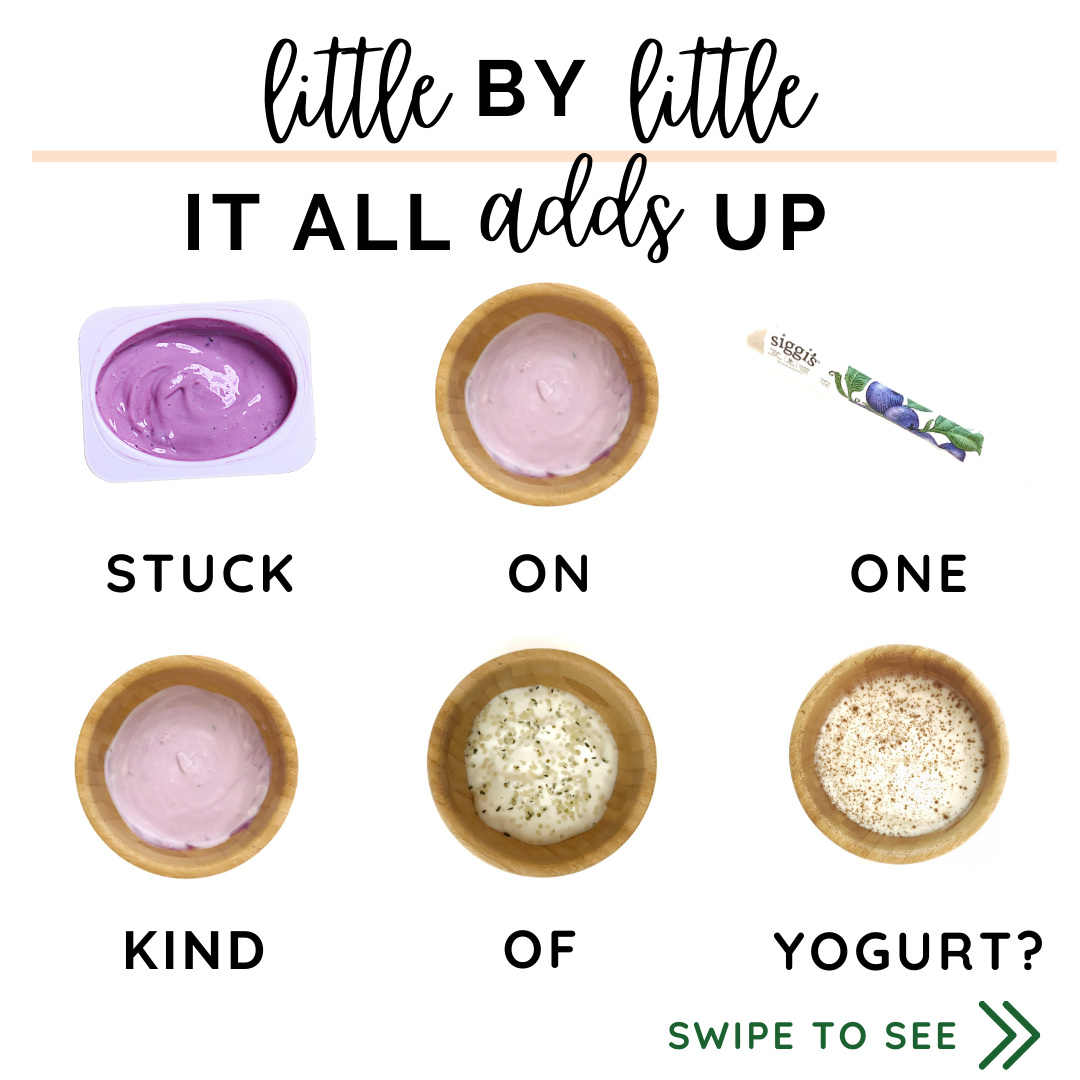
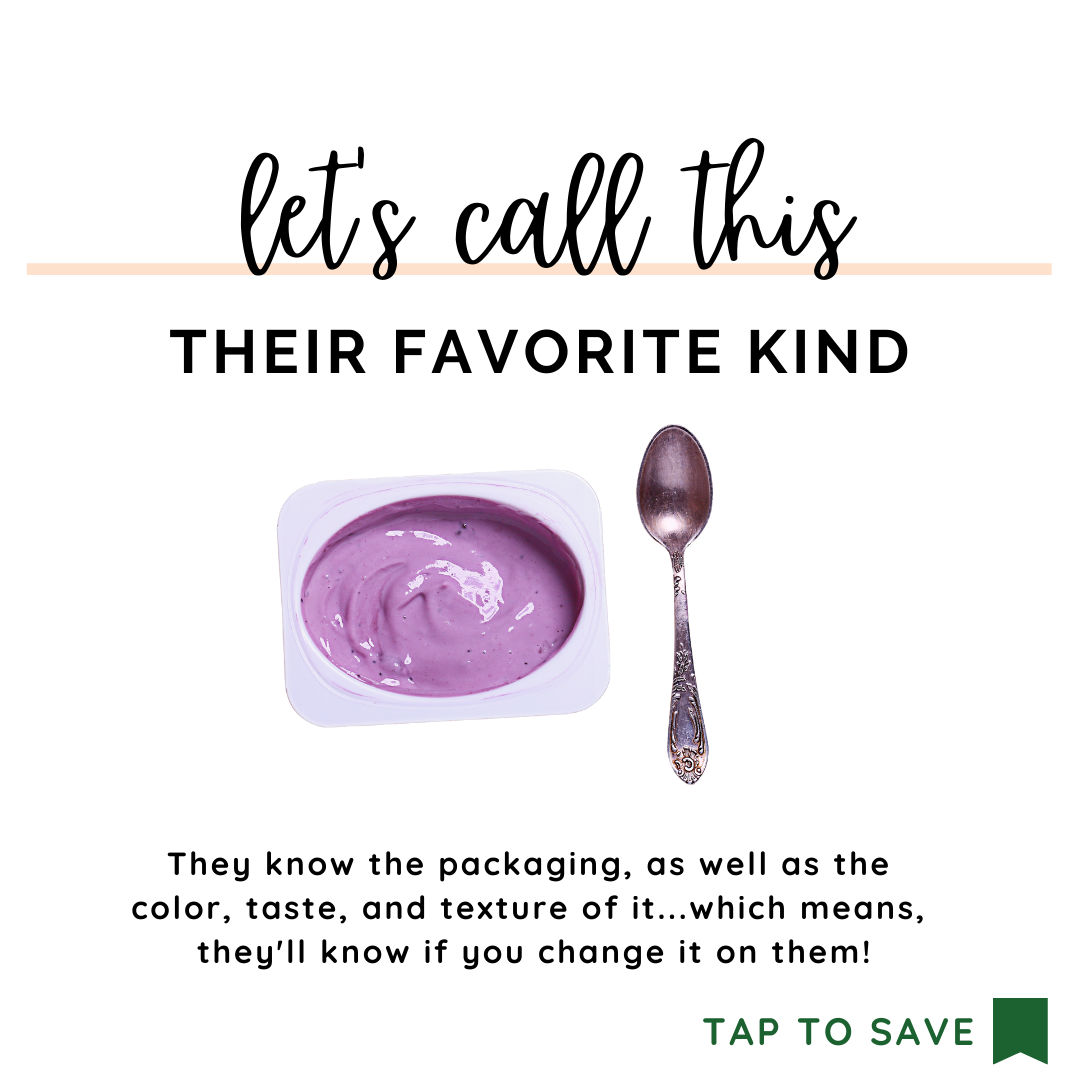

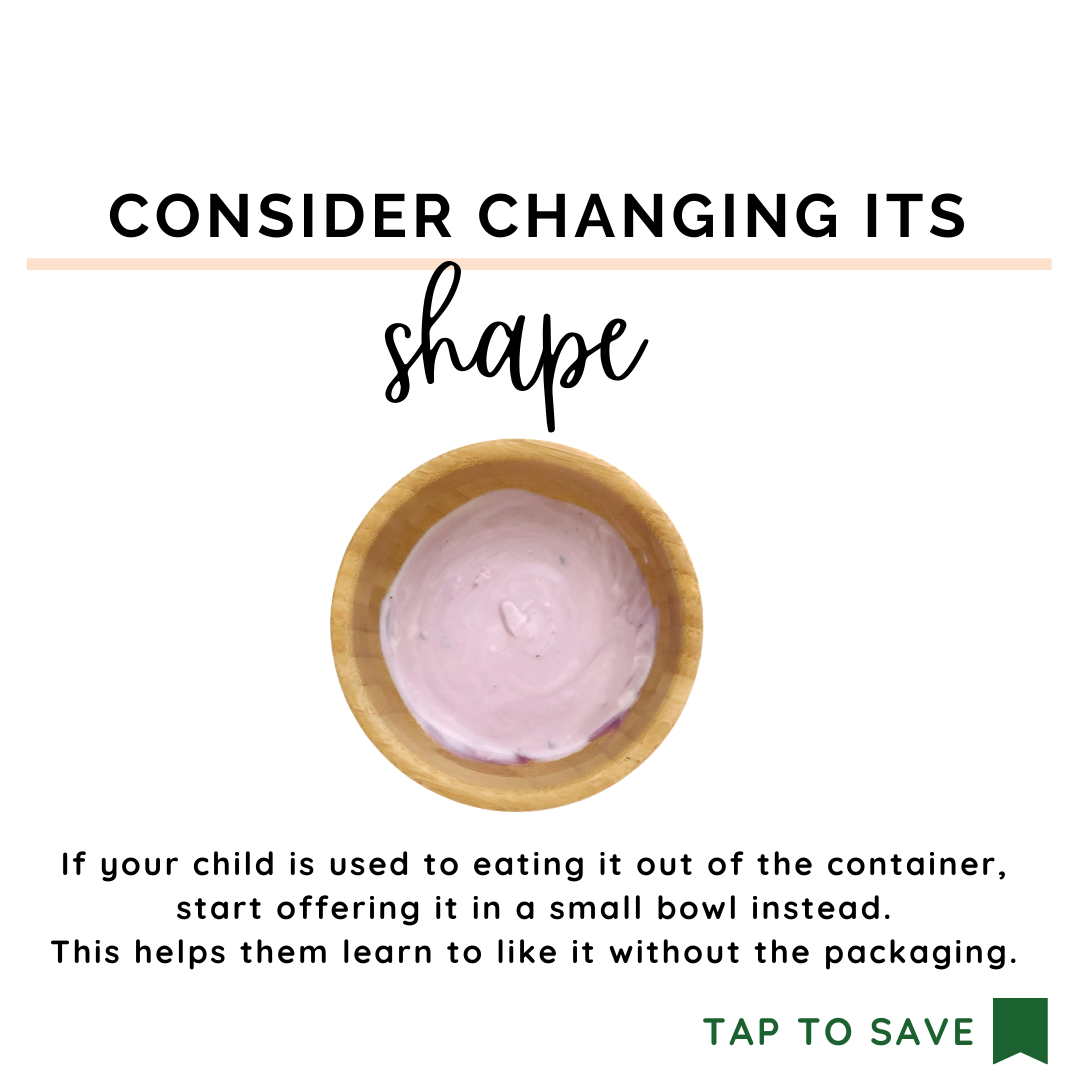
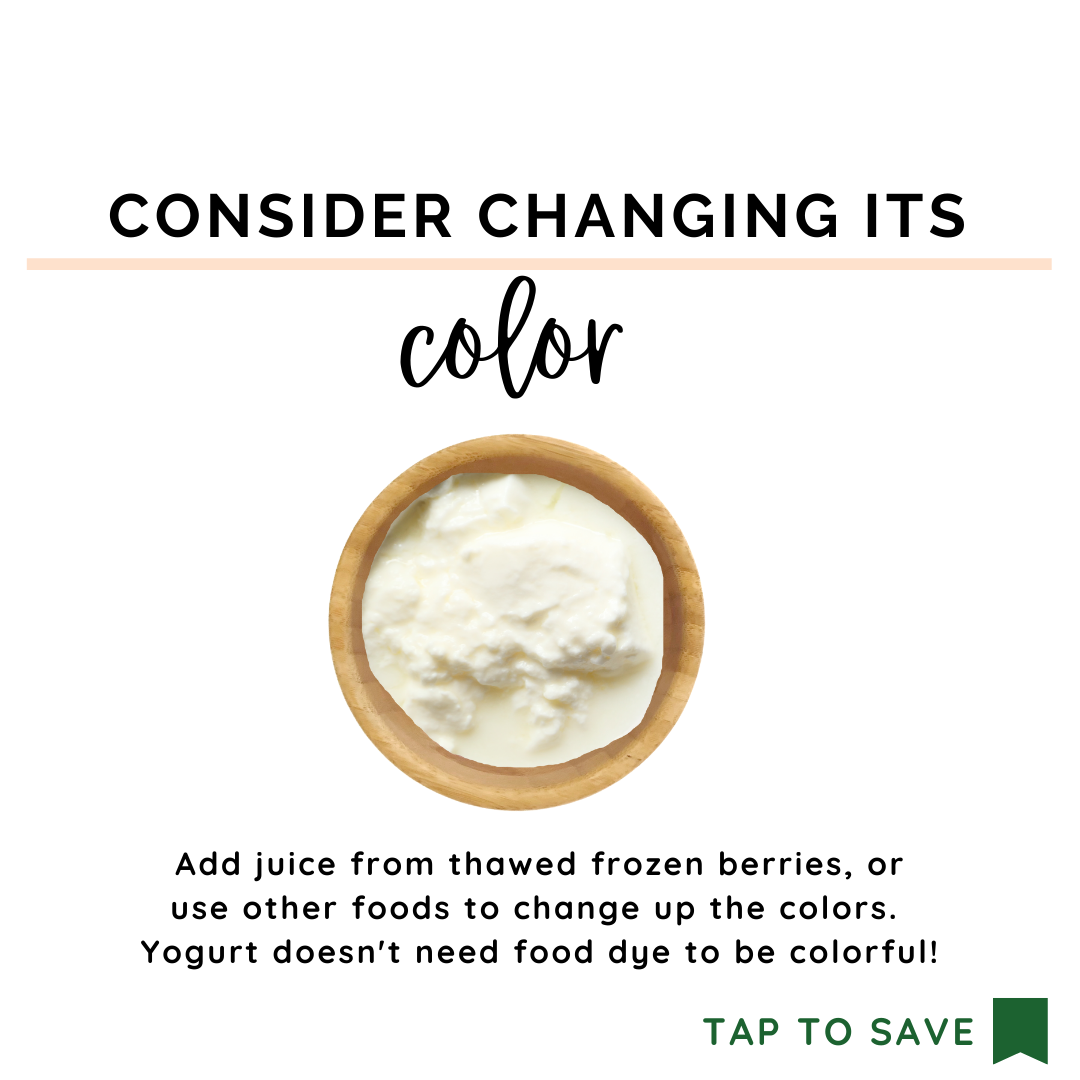
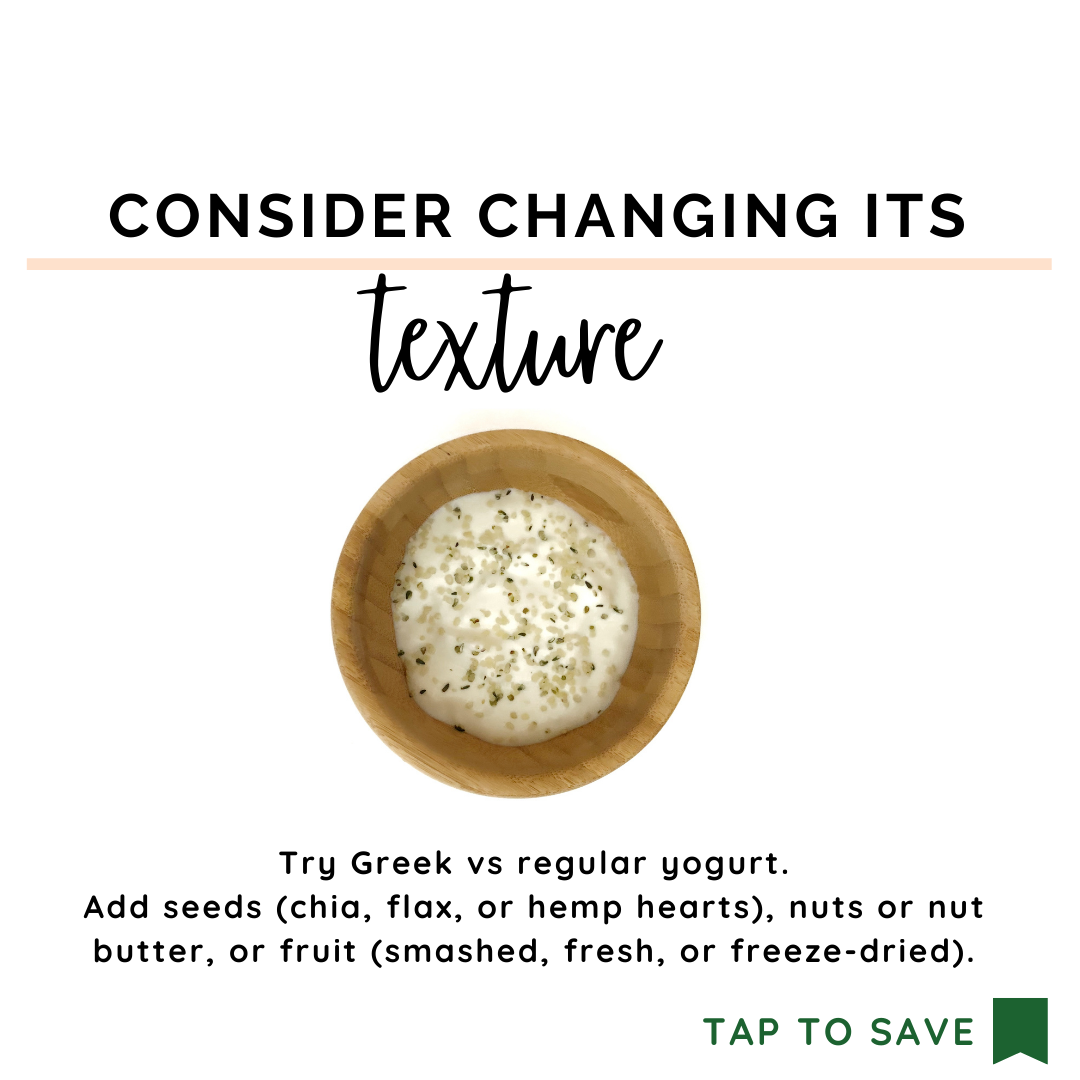
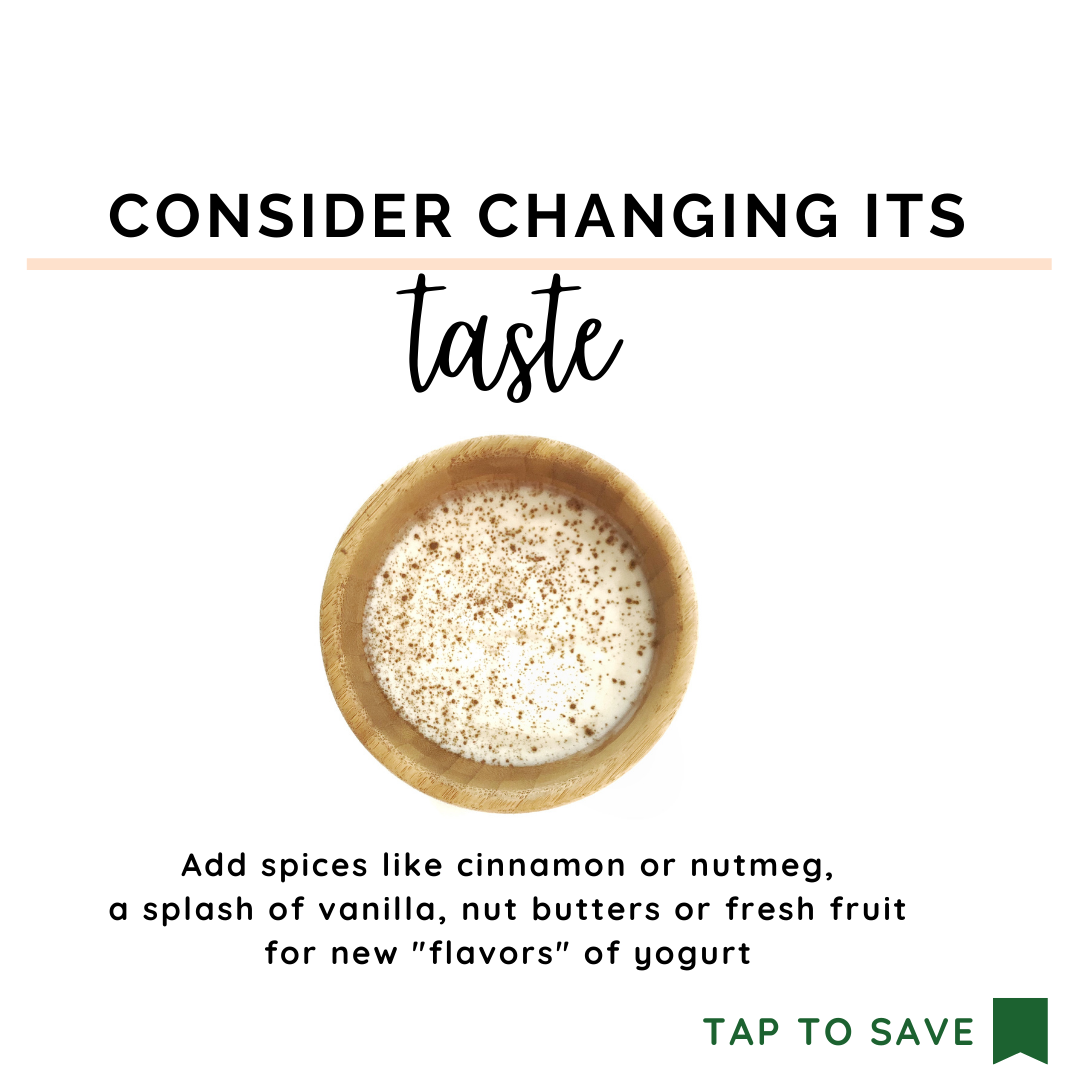

Kid-friendly ways to offer yogurt and promote nutrition
Children of all ages can benefit from yogurt being a vehicle for additional nutrient-rich foods. While in and of itself, it offers many nutritional benefits, there are many ways parents can help further promote their child’s nutrition through the following ideas. Each of these can be found on Ashley’s Combination Cards snack deck so that families have endless ideas for optimizing the nutrition in homemade or store-bought yogurt with kids.
More Healthy Yogurt Recipes and Ideas for Kids
For more ideas and insight on how to incorporate yogurt in your family’s diet, purchase a set of Ashley’s Combination Cards and-save. In PDF or waterproof + printed copies, these are a must-have in every family’s kitchen! You can also follow along for more fun recipe ideas on Ashley’s Combination Cards: Yogurt Pinterest page.


